#Ilex aquifolium
Explore tagged Tumblr posts
Text
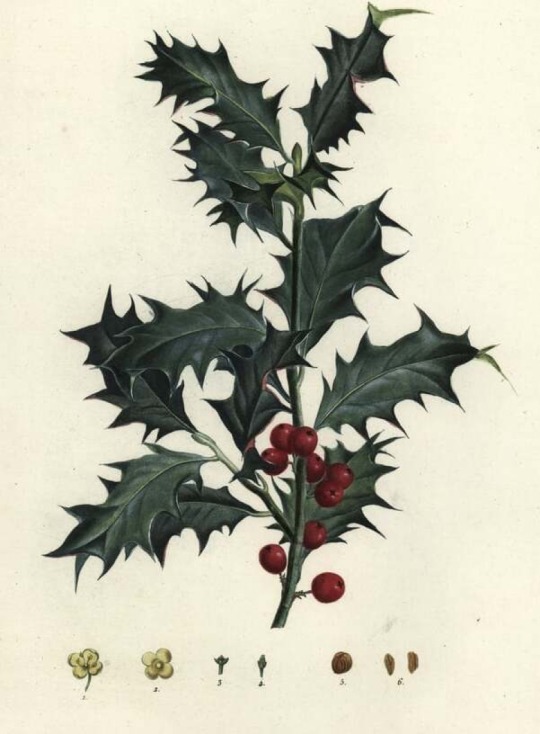
Common Holly , Traitae des Arbres et Arbustres * - Henri Redouté , 1850.
Belgian, 1766-1852
Illustration
*Henri Louis Duhamel du Monceau , 1852.
Ilex aquifolium
281 notes
·
View notes
Text
Christmas Holly

A Christmas Holly, sometimes also known as European Holly (Ilex aquifolium), making an appearance by the side of the Flower Field in the conservatory. Photo credit: Jonathan Chua.
This holly was planted in the Flower Dome here by the Ambassador of Ireland to Singapore to commemorate 50 years of diplomatic relations.
#photographers on tumblr#christmas holly#european holly#flora fauna#flora photography#flower pics#Ilex aquifolium#sigma 18-300mm#sigma photography#sigma sd quattro h
38 notes
·
View notes
Text
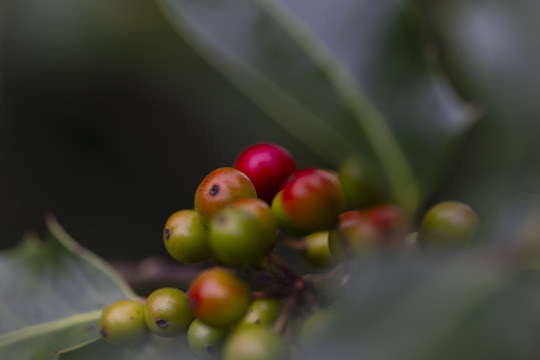
Reifende Früchte der Stechpalme (Ilex aquifolium)
#berries#ilex#macro#close up#detail#growth#Ilex aquifolium#leaves#nature photography#photographers on tumblr#Stechpalme#natur-nah-dran.de#autumn#red#rot#Kristian Papp#Oktober2023
31 notes
·
View notes
Video
Tiny snail por Rosana Por Flickr: For Looking close... on Friday: "Flora & Fauna in Vertical Photo"
#Looking close... on Friday#Macro#My garden#Nature#Nikkor 105mm f2.8#Nikon z6#close up#flora & fauna in vertical photo#snail#green leaves#Ilex aquifolium#flickr
2 notes
·
View notes
Text
Discovering the links between the temperate and tropical flora
Botany both hot and cold. Join me on my 20+ year and ongoing journey looking for links between the tropical and temperate flora
How are the tropical and temperate floras linked? I spent a good part of my time as a botanist thinking about this. I was born in the tropics, and weaned on a tropical flora. There in the tropics, there is so much variety – enough for lifetimes of study. I thought I would stay there forever, exploring the great southeast Asian tropical flora. Yet, life brought me to the south temperate lands of…

View On WordPress
#Agathis atropurpurea#Agathis australis#Agathis microstachya#Agathis robusta#Ailanthus altissima#Ailanthus triphysa#Araucaria angustifolia#Araucaria araucana#Araucaria bidwillii#Araucaria cunninghamii#Araucaria hunsteinii#Asplenium cuneatum#Asplenium ruta-marina#Asplenium scolopendrum#Asplenium simplicifrons#Clematis pickeringii#congeneric#Elaeagnus pungens#Elaeagnus triflora#Euphorbia amygdaloides#Euphorbia thymifolia#Ilex aquifolium#plant genera#Polygala linariifolia#Polygala myrtifolia#Prunus turneriana#Rubus alceifolius#temperate flora#tropical and temperate#tropical flora
0 notes
Text

0 notes
Note
it's amazing, just incredible, how this site keeps getting asks that go like "I hope it's a cat", "I love birds", and then the organism that comes out isn't even in the same phylum. anyway; not me, I'm different I'm special, and analysis of this text WILL result in a lizard
String identified: t' aag, t c, t t gttg a tat g " t' a cat", " ", a t t ga tat c t 't t a . aa; t , ' t ' ca, a aa t tt t a a
Closest match: Ilex aquifolium genome assembly, chromosome: 7 Common name: Christmas holly
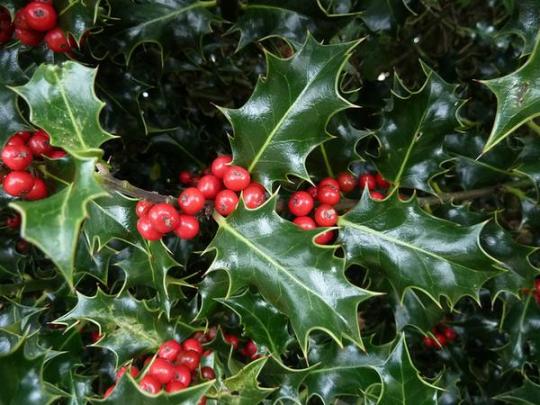
4K notes
·
View notes
Text
Forging A Blasting Rod



-My personal blasting rod.
A blasting rod is a specialized magickal tool used in witchcraft and ceremonial magick, primarily for baneful workings, commanding spirits, protection, and energy projection. Unlike a traditional wand, which channels and directs energy gently, a blasting rod forcefully projects power, making it a tool of will, authority, and raw energy manipulation. This guide will walk you through selecting materials, crafting, and charging your blasting rod.
Understanding the Purpose of a Blasting Rod
A blasting rod is used in high-energy workings, including:
• Commanding spirits in ceremonial or necromantic magick.
• Cursing and hexing with focused intent.
• Banishing unwanted energies with force.
• Defensive and protective magick, repelling negativity.
• Directing raw power in aggressive spellwork.
It is a tool of action, unlike a regular wand, which can be more neutral or passive in nature.
Choosing Materials
Wood Selection (Powerful & Commanding Woods)
The rod should be strong, sturdy, and hold commanding energy. Some of the best choices include:
• Blackthorn (Prunus spinosa) – The traditional wood for blasting rods, used in baneful magick and spirit work.
• Black Locust (Robinia pseudoacacia) - Another favorite for blasting rods, used in attack/defense magick, blood magick, and baneful magick.
• Ironwood (Ostrya virginiana) - Formidable and strong when dealing with unwanted forces.
• Rowan (Sorbus aucuparia) – Protective and potent against unwanted spirits.
• Oak (Quercus spp.) – A wood of strength and dominance.
• Yew (Taxus baccata) - Symbolic of death and doom, ideal for baneful magick and interacting with the spirits of the dead.
• Holly (Ilex aquifolium) – Often used in aggressive and defensive magick.
• Hawthorn (Crataegus spp.) – Excellent for curses, hexes, and protection against harmful forces.
If possible, gather the wood ethically—from naturally fallen branches rather than cutting from a living tree. Some traditions believe the wood should be taken from a tree struck by lightning for added potency.

Length & Shape
• A blasting rod is usually longer and thicker than a traditional wand, about 12-18 inches.
• It should feel balanced in your hand, not too lightweight or delicate.
Crystal & Metal Enhancements
To amplify its power, consider embedding:
• Opal (especially black) - Amplifies malefic energy.
• Obsidian or black tourmaline – For protection, banishment, and absorbing negativity.
• Quartz (Clear, smoky, or black) – Strengthens and amplifies energy projection.
• Ruby – Focuses your intention onto the target.
• Amethyst - Self destruction, nightmares, paranoia.
• Garnet - Drains energy from the target.
• Sardonyx - Returns negative energy to sender.
• Malachite - Illicits fear and anxiety.
• Meteorite - Used as an amplifier in baneful magick.
• Iron – Binding, commanding, often used in defensive magick.
• Copper - Amplifier, increases power and effect.
Crafting the Blasting Rod
Cleansing – Before crafting, cleanse the wood by smudging it with mugwort, dragon’s blood, or wormwood smoke. Washing it with saltwater or an herbal infusion (rosemary and rue work well).
Shaping – Strip off excess bark (optional) but keep some texture for a rough, commanding grip.
Symbology – Carve runic symbols, sigils, or glyphs into the shaft. Leave one end pointed or tapered for directing energy.
Adding Power Enhancements - Wrap the handle with black leather, red twine, or iron/copper wire to contain and direct energy. Affix a crystal or iron nail at the tip for added force.
Anoint with ritual oils like:
• Dragon’s Blood – Amplifies power, brings destruction.
• Wormwood & Mugwort – Strengthens spiritual command.
• Black Pepper & Sulfur – Adds potency in baneful work.
• Myrrh - Boosts malevolent power.
Charging & Consecrating the Blasting Rod
A blasting rod should be charged under intense conditions to match its purpose. Some methods include:
Consecration Ritual
• Set Sacred Space – Cast a circle or work at a crossroad, cemetery, or dark moon ritual setting.
• Elemental Charging:
• Fire: Pass the rod through flame (candles or bonfire) to awaken its force.
• Earth: Bury it overnight in graveyard dirt, sulfur, or black salt.
• Water: Dip it in storm water, ocean water, or an infusion of baneful herbs.
• Air: Hold it in thick incense smoke (dragon’s blood, myrrh, or mugwort).

• Invocation of Power:
Hold the rod and speak,
"Rod of might, tool of command,
Through storm and flame, by my hand,
Channel power, force of will,
Let no spirit act against my skill."
Charging Under Planetary & Lunar Energy
• Dark Moon – Best for baneful, binding, or spirit work.
• Full Moon – Enhances overall energy projection.
• Tuesday (Mars' Day) – Ideal for charging aggressive or commanding tools.
• Saturn’s Hour – Adds banishing and protective strength.
Using the Blasting Rod in Magick
Now that your glorious rod of blasting is complete, it's time to unleash its power.
Baneful Work (Hexes, Curses, & Banishing)
• Point the rod at a poppet, target’s name paper, or spell jar while chanting.
• Direct energy into curse sigils or spellwork for amplified power.
• Break curses by striking the ground or altar with the rod.
Commanding Spirits & Evocation
• Used in ceremonial magick to bind, summon, or dismiss spirits.
• Strike the ground or altar three times when calling a spirit.
• Use it to trace sigils in the air when working with the dead or the astral.
Protection & Warding
• Point at a door or window while chanting to seal a space.
• Use it to break hexes or disrupt malevolent energy fields.
• Bury near your home’s entrance to create a protective ward.
Final Thoughts & Maintenance
• Recharge it under powerful celestial events (eclipses, storms, or planetary transits).
• Store it separately from gentler tools, preferably wrapped in black cloth.
• Never use it casually – a blasting rod is for intense, serious magick only.
A properly crafted and consecrated blasting rod is a tool of great power and responsibility. It should be treated with respect, as it embodies raw will, force, and command.

#baneful witch#baneful#magick#baneful magic#curses and hexes#cursing#curses#curse#magic wand#wand#witch craft#trees#crystals#witch#witchcraft#dark#witchblr#witch community#eclectic witch#eclectic#pagan#How to#spellcasting#spellwork#spells#spell#lefthandpath#satanism#satanic witch#chaos
86 notes
·
View notes
Text

Ilex aquifolium Root system drawing Wurzelatlas (Lore Kutschera, Erwin Lichtenegger)
#trees#plants#nature#Wurzelatlas#drawing#root systems#dendrology#botany#science#Erwin Lichtenegger#Lore Kutschera#rhizome
118 notes
·
View notes
Text
also please note that me being annoying about the difference between mistletoe and holly in spirk art is entirely driven by the headcanon that kirk at one point Tries to get a kiss from spock via mistletoe but accidentally uses holly, and spock, being spock, goes "captain, that is an example of Ilex aquifolium, also known as holly. it is a distinct species from mistletoe, which is characterized by long oval leaves and white berries. therefore, you are under no obligation to kiss me." and just. never realizes that kirk was flirting.
(bones laughs at kirk about it)
#i'm just channeling spock. you KNOW he'd be nitpicky about what plant was there#tos#star trek tos#spirk#james t kirk#spock
68 notes
·
View notes
Text
One Poem a Day: December

"beautiful" words related to December for your next poem/story
December - 12th month of the Gregorian calendar. Its name is derived from decem, Latin for “ten,” indicating its position in the early Roman calendar.
Alabasterine - pertaining to the compact fine-textured usually white and translucent gypsum often carved into vases and ornaments
Caducity - senility; the quality of being transitory or perishable
Clementine - a small nearly seedless citrus fruit that is probably a hybrid between a tangerine and an orange
Complaisance - disposition to please or comply; affability
Diaphanous - characterized by extreme delicacy of form; ethereal
Ecru - a pale or light grayish yellow or brown; beige
Eggnog - a drink consisting of eggs beaten with sugar, milk or cream, and often alcoholic liquor
Etiolate - to make pale
Exsanguination - the action or process of draining or losing blood
Frisson - a brief moment of emotional excitement; shudder, thrill
Frore - frosty, frozen
Graupel - granular snow pellets
Holly - any of a genus (Ilex) of trees and shrubs especially: either of two (I. opaca and I. aquifolium) with spiny-margined evergreen leaves and usually red berries often used for Christmas decorations
Imparadise - to make supremely happy, transport with delight or joy
Lambent - playing lightly on or over a surface; flickering; softly bright or radiant
Morpheus - the Greek god of dreams
Nacreous - possessing the qualities of, consisting of, or abounding in nacre, also: iridescent
Nascence - birth, origin
Névé - the partially compacted granular snow that forms the surface part of the upper end of a glacier
Overwinter - to last through or pass the winter
Paperwhite - a polyanthus narcissus bearing clusters of small very fragrant pure white flowers
Parturition - the action or process of giving birth to offspring; childbirth
Passementerie - an ornamental edging or trimming (such as tassels) made of braid, cord, gimp, beading, or metallic thread
Pellucid - reflecting light evenly from all surfaces
Purfle - to ornament the border or edges of
Sublunary - of, relating to, or characteristic of the terrestrial world
Sylph - an elemental being in the theory of Paracelsus that inhabits air
Tanzanite - a mineral that is a deep blue variety of zoisite and is used as a gemstone
Turquoise - a mineral that is a blue, bluish-green, or greenish-gray hydrous basic phosphate of copper and aluminum, takes a high polish, and is valued as a gem when sky blue
Umbral - of little or no light
Zircon - a tetragonal mineral consisting of a silicate of zirconium and occurring usually in brown or grayish square prisms of adamantine luster or sometimes in transparent forms which are used as gems
Sources: 1 2 3 ⚜ More: Word Lists ⚜ Writing Prompts
#word list#december#spilled ink#writing reference#dark academia#writing inspiration#words#langblr#linguistics#writeblr#writing prompt#literature#writers on tumblr#poets on tumblr#poetry#creative writing#writing ideas#aleksey savrasov#writing resources
82 notes
·
View notes
Text
A Bejewelled Seasonal Favourite

Common Hollies blooming just in time for Christmastide. Photo credit: Jonathan Chua.
This was shot against the light with the exposure biased 3 stops brighter. With an electronic viewfinder, it was much easier to nail the exposure with the first shot.
#photographers on tumblr#common holly photos#flora fauna#flora photography#flower pics#Ilex aquifolium#nikon photography#nikon zfc#photography tips#tamron 18-270mm
2 notes
·
View notes
Text

Can you tell an invasive species from a native one?
I've pulled up a lot of invasive plants over the years, and some of them have native species that are close look-alikes. This is a great example. On the left you can see a European holly seedling (Ilex aquifolium) that I uprooted, and on the right are the leaves of Oregon grape (Berberis aquifolium) that was growing nearby.
Both plants have leaves that are oval in shape with spiky edges, dark green in color on top with a paler green underside, a shiny/waxy texture, and a prominent central vein with more slender veins branching off to both sides. Both can grow into a sizable shrub, though holly often grows into a small tree much taller than its native counterpart.
The biggest giveaway that the plant on the left is holly is the fact that the edges are wavy and the spikes are more unruly, often pointing in different directions. They may also be spaced further apart. Oregon grape's leaf margins are flatter, and the spikes more orderly. Oregon grape leaves are usually a little lighter in color, and a little less shiny, especially when dry. If you have a chance to see the berries of each species, holly berries are bright red, while Oregon grape's are a dusty blue, and they show up earlier in the year than holly berries. Oregon grape flowers, which are yellow, also appear earlier in the year than holly's white flowers.
Holly seedlings often dot forest floors in the Pacific Northwest because it is a common ornamental shrub, and the region also produces large quantities of holly for holiday decorations. Unfortunately birds will eat the seeds and then distribute them far and wide, making this plant hard to control. If you decide to pull holly seedlings by hand, double check those leaves to be sure you aren't accidentally pulling a small native Oregon grape.
#plants#botany#plant identification#nature#holly#oregon grape#native plants#invasive plants#invasive species#ecology#educational#leaves
56 notes
·
View notes
Text

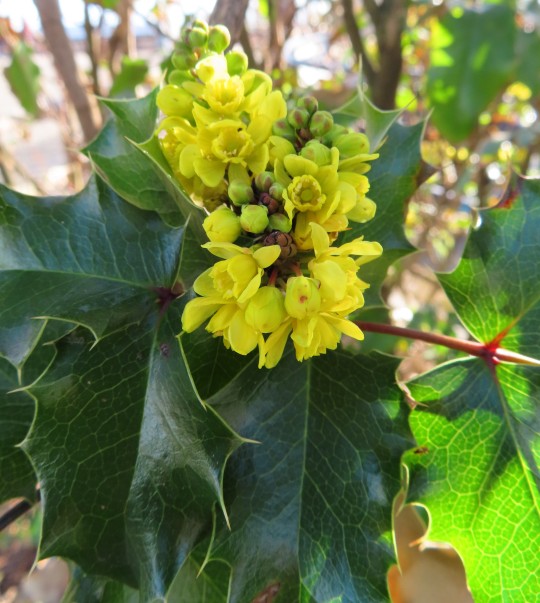

Berberis aquifolium - formerly Mahonia aquifolium (Oregon grape)
Oregon grape is another native spring flower and is usually found as an understory plant in our local coniferous rainforests. The species name aquifolium is based on Ilex aquifolium (English holly) and you must admit, Oregon grape leaves are remarkably holly-like. Actually, it's neither a grape nor a holly but rather a member of the barberry family. Incidentally, Oregon grape was declared the state flower of Oregon in 1899.
#flowers#photographers on tumblr#Oregon grape#spring flowers#native plants#fleurs#flores#fiori#blumen#bloemen#Vancouver#Canada
145 notes
·
View notes
Text

Agrifoglio (Ilex aquifolium L., Aquifoliaceae)
14 notes
·
View notes
Text
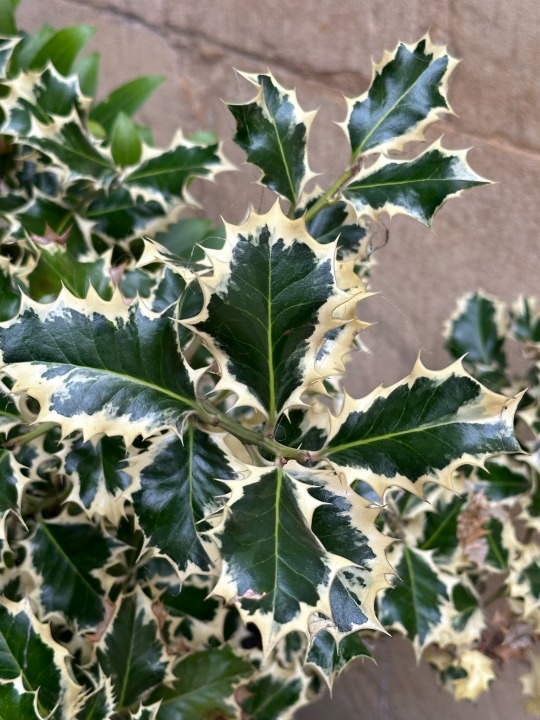

Plant of the Day
Friday 15 September 2023
Outside the Stamford Library, Lincolnshire, was this container which included the evergreen Ilex aquifolium 'Argentea Marginata' (broad-leaved silver holly). This female holly has white-margined, dark green leaves and masses of bright red berries in autumn through to winter. It's particularly suitable for urban or coastal sites since it copes well with pollution and salt-laden air.
Jill Raggett
#ilex#broad-leaved silver holly#holly#plants#evergreen#shrub#variegated#container#horticulture#foliage
67 notes
·
View notes